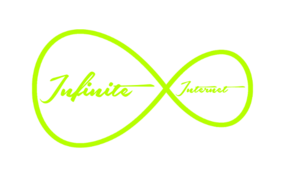Infinite Internet
This article is incomplete because it is pending further input from participants, or it is a work-in-progress by one author. Please comment on this article's talk page to share your input, comments and questions. Note: To contribute to this article, you may need to seek help from the author(s) of this page. |
 | |
| Predecessors | Makko Telecom Lightspeed Broadband |
|---|---|
| Founder | Carl Maag |
| Website | infinternet.co.mk |
Infinite Internet is a privately-owned, state-authorized, telecommunications company in the nation of Makko Oko. They were previously known as Makko Telecom and Lightspeed Broadband, and when the innovations of fiber came about, changed their name to Infinite Internet.
History
Makko Telecom
Makko Telecom was one of the first internet service providers in the nation when the innovation of the internet first came about. Makko Telecom was founded by Beatrice Serrano on August 8th, 1995, when a foreign dial-up modem was tested out on a makeshift ISP and website setup at her home in Aslossey, Makko Oko. Being successful, she had the idea to become the first ever dial-up internet provider in the Template:Makko Oko.
Beatrice Serrano is considered the "Mother Of The Makko Okoan Internet", including by today's government.
The Beginning
Operations started quite slowly, and she had needed a lot of money and connections to get the service covering a good portion of the nation, or at least, a good amount of people. This would soon be established after the Republic Of Makko Oko, even small for its time, dedicated a lot of money in the belief that the internet would be the next biggest innovation to society, and would bring about a faster development of the small nation, only existing for 5 years at the time.
By July 12th, 1996, 650,000 customers had signed up to Makko Telecom, covering around 7% of the nation's population, which at the time was a measly 9 million. Online government services had been flourishing at this time, with 46 government services available on the internet by January 29th, 2000. Other websites and services, such as Google, constantly got added to the service, which by 1997, had Makko Telecom connected to the international extranet network, to connect with other nations, and to save money on upkeep and operations.
The Cost Of Service
The cost of upkeep and maintenance was factored into the cost of service, and as Makko Telecom expanded, the service cost would get either more expensive, or cheaper, depending on the circumstances. The typical service cost of Makko Telecom services was $0.87 a minute in the infancy period between 1995-1996, then $0.58 a minute between 1996-1999. After 1999, Makko Telecom would establish a flat rate service fee, which was to be paid monthly, which was $7 a month.
Beatrice's Life
Beatrice Serrano had been CEO and Founder of Makko Telecom since its inception in August of 1995. She was born on January 13th, 1966. She had graduated at the top of her class in 1991 with a Masters Degree in Computer Science from Ferwert University, as at the time, colleges were still in its infancy with the Republic Of Makko Oko not existing very long, and being under an unofficial government and nation, under the Phoenix Island Tribe, for most of her life at that time.
After she graduated, she came back to Makko Oko to help build up the government and its educational offerings, mainly dealing with coding and computer literacy courses. When Beatrice heard about the invention of the internet, with her new-found knowledge, she would spend years setting up a home lab makeshift internet provider, testing out dial-up within the nation, to one, see if it was possible, and two, to see if she could do it. As is obvious, she succeeded and ended up founding Makko Telecom.
She died on May 4th, 2005, at the age of 39, to an epileptic seizure. The reason that she had one remains unknown to this day, but it is suspected that eating dead human meat that wasn't handled with the food safety regulations that exist today, which was common among the Phoenix Island Tribe until the republic's establishment, had a hand in her death.
Lightspeed Broadband
Lightspeed Broadband was the next generation of Makko Telecom, which by the time of its inception, had covered almost every household in the nation. With broadband and wireless internet technology developing more by the day, Beatrice Serrano knew they had to get in on the innovation, and started work on developing a broadband infrastructure, which was the first ISP in the nation to do so. Later on, A switch in the branding and company from Makko Telecom to Lightspeed Broadband was declared publicly, which began on September 3rd, 2003. Makko Telecom after the switch, would go into the dark and be unused, however, dial-up services were still provided under the new brand. Lightspeed Broadband was officially founded by Beatrice Serrano, who was still CEO of Makko Telecom at the time.
Life Of Lightspeed
Lightspeed Broadband had a rough start, not having much direction from Beatrice, who was the one who ran the show during the development of the nation's dial-up infrastructure during the life of Makko Telecom, due to being unaware of broadband and its inner workings, graduating from college in 1991, which didn't teach the new technology due to it being non-existent. Beatrice instead worked with the huge team of developers and coders on the backend of the broadband infrastructure, which had over 450,000 employees alone, with them previously focused on maintenance and upkeep of the Makko Telecom dial-up infrastructure.
By 2006, Lightspeed Broadband covered 28 million people, which was 31% of the nation's population at the time. Out of that 28 million population service area, 7 million people were customers, with many of the people not signed up sticking to dial-up services, due to the still premium broadband service prices and the dwindling economy.
The Cost Of Service
Lightspeed Broadband had multiple tiers throughout their lifespan for broadband service, in addition to dial-up services, which was officially discontinued on April 17th, 2008, after the costs to keep it maintained in addition to maintaining the broadband infrastructure was getting too expensive, in addition to the economy's ever-spiraling downturn.
When Lightspeed Broadband first started, they had a single tier that was $50 a month for 300 KBps, later being upgraded to 450, then 500. In 2004, Lightspeed introduced multiple tiers:
Basic Speed (The Cheapest)
- The cheapest tier was the Basic Speed tier, which existed throughout the lifespan of Lightspeed, going through multiple changes and being a major dependent upon the beginning of the Civil Transition War. When the plan was launched in 2004, it offered 100 Kbps for $15 a month, only slightly more expensive than dial-up. In 2005, it was boosted to 200 Kbps for no extra charge. In 2006, the plan's price was upped to $20 a month, with speeds also going up to 500 Kbps.
Gaming Speed (The Median Of Speeds)
- The middle tier was known as the Gaming Speed tier, which existed throughout the lifespan of Lightspeed, going through multiple changes throughout it. When the plan was launched in 2004, it offered 300 Kbps for $35 a month. In 2005, it was boosted to 450 Kbps with an upped price of $40 a month. In 2006, speeds went up to 1 Mbps, with the plan's pricing not being affected.
Light Speed (Living In The Future)
- The highest tier was known as the Light Speed tier, named after the company itself, Lightspeed Broadband, which existed throughout the lifespan of Lightspeed, going through multiple changes throughout it. When the plan was launched in 2004, it offered 500 Kbps for $55 a month. In 2005, it was boosted to 700 Kbps with no price change. In 2006, speeds went up to 3 Mbps, with the plan's pricing being upped to $60 a month.
Lightspeed's Demise
Lightspeed Broadband had been the biggest broadband internet provider in the nation for many years, with competition only being able to fare in prices, sometimes undercutting Lightspeed to steal customers, which in some cases failed due to being outside of the competition's service area.
